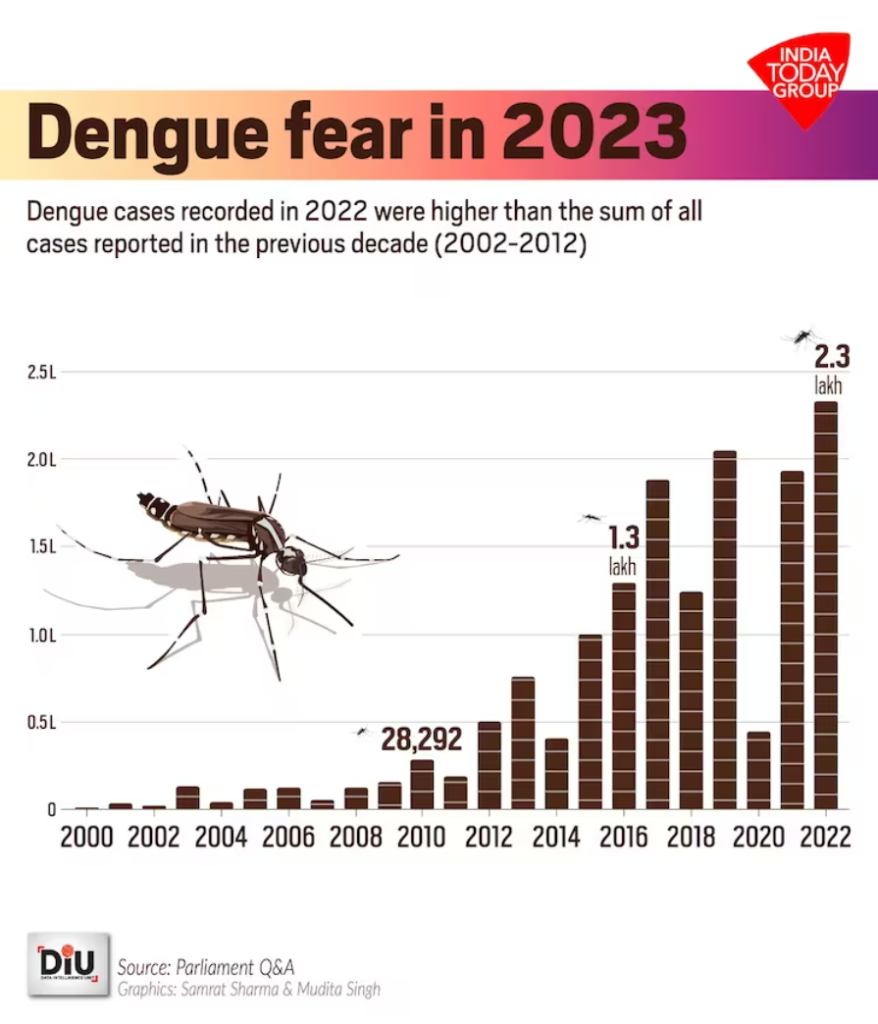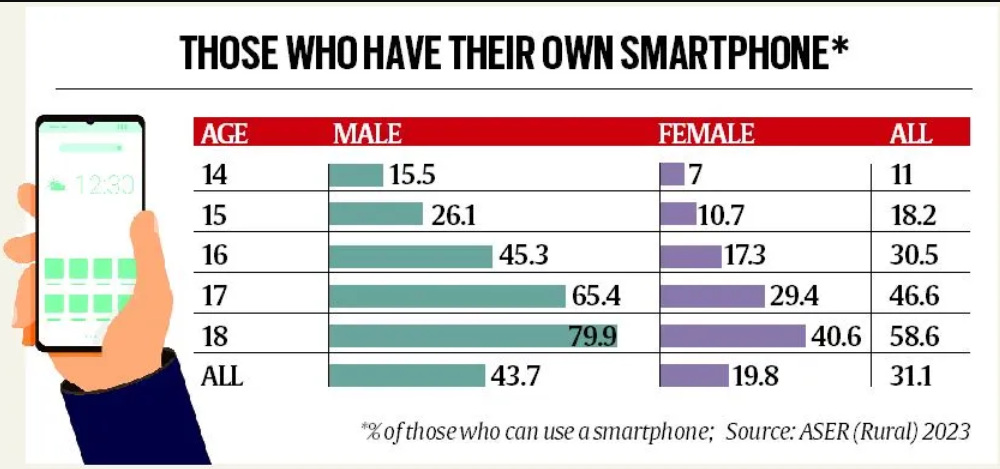CONTENTS
- Populism Does not Help Public Health
- Rural India Deserves Better Schooling
Populism Does not Help Public Health
Context:
In the midst of the bustling cities and serene villages of India, a silent yet significant battle is being fought on the frontlines of public health. The narrative is not dominated by the sensational victories of curative medicine but rather by the understated successes in preventing diseases like smallpox (still under surveillance despite eradication), polio, neonatal tetanus, and measles through enhanced sanitation and vaccination efforts. These are triumphs that often go unnoticed, as the absence of illness itself speaks volumes.
Relevance:
GS2-
- Government Policies and Intervention
- Health
Mains Question:
A separation of healthcare decision making from short-term political goals is crucial to develop sustainable health strategies that address both the immediate and future health needs of the population. Analyse. (15 Marks, 250 Words).
Immediate Outcomes v/s Sustainable Preventive Strategies:
- In the democratic framework, leaders often prioritize tangible achievements, inadvertently or otherwise neglecting the crucial efforts in disease prevention.
- Political figures, regardless of their affiliations, tend to favor initiatives promising immediate outcomes, such as establishing new hospitals, offering subsidized treatments in private healthcare facilities, prioritizing emergency response over preventive measures, and adopting populist health policies.
- Unfortunately, many of these measures fall short of making a significant impact due to constraints in budgetary allocations.
- Even before these schemes can be put into action, the focus on such initiatives diverts attention away from critical areas like sanitation, disease surveillance, and public health education.
- These aspects are pivotal for maintaining the overall health of the population and preventing the outbreak of diseases.
Case Study of Dengue:
- The instance of dengue provides a notable case study. This disease, lacking a definitive cure, relies on symptomatic treatments.
- During surges in cases, political leaders often mobilize state resources for immediate relief camps, neglecting essential long-term strategies such as comprehending vector bionomics and developing effective vaccines.

- While both are necessary, dengue exemplifies a tendency to prioritize immediate responses at the expense of sustainable prevention.
- The emphasis on emergency relief also detracts attention from addressing the root causes of dengue and its long-term prevention. This includes essential research in vector control, vaccine development, and improvements in public health infrastructure.
- Consequently, the current approach fails to forestall future outbreaks, placing strain on the healthcare system.
- Research and development in these areas are critical; for instance, despite limitations, the existing dengue vaccine highlights the need for further exploration.
- Climate change’s impact on mosquito breeding and movement patterns necessitates adaptation in public health strategies.
Way Forward:
| Detachment from Political Processes | Drawing inspiration from the structure of India’s judicial system and space program, healthcare would benefit from detachment from political processes. Decisions regarding public health should be grounded in scientific evidence and long-term goals rather than short-term political interests. Such separation would ensure that public health policies are guided by data and expertise, free from the influence of electoral cycles. |
| Investments in Nutrition Programs | The insights of civil servant Joseph Bhore from 1946, regarding the economic and human costs of neglecting preventive health measures, remain relevant. Investments in nutrition programs, while not immediately visible, have profound implications for health and productivity. The present Prime Minister’s Overarching Scheme For Holistic Nourishment (POSHAN) Abhiyan Scheme aims to annually reduce stunting by 2%, undernutrition by 2%, anaemia by 3%, and low birth weight by 2%. However, the fifth National Family Health Survey discovered that in 2019-21, 35.5% of children under five were stunted, and 32.1% were underweight. During the same period, the prevalence of anaemia in children aged 6-59 months increased from 58.6% to 67.1%, and among women aged 15-19 years, it rose from 54.1% to 59.1%. This discrepancy between policy targets and actual prevalence underscores a significant gap in public health initiatives. |
| A Pharmaceutical Industry Driven by Public Health | The influence of the pharmaceutical industry on public health is undeniable. While crucial in advancing curative medicine, its profit-driven nature often sidelines aspects of public health. For example, despite having the same medicines to combat tuberculosis (TB), India reported 21.4 lakh TB cases in 2021, an 18% increase from 2020, resulting in an incidence of 210 cases per 1,00,000 population. In contrast, the United States reported only 8,331 TB cases in 2022, approximately 2.5 cases per 1,00,000 persons. This disparity is not solely due to the availability of medical treatment but is deeply connected to socio-economic factors such as poverty, sanitation, and overcrowding (resulting from poorly organized urban housing) prevalent in India. |
| Behavioral Shifts | Bringing about behavioral change is crucial for addressing public health challenges, but it becomes difficult in political environments influenced by populist tendencies. The lack of specialized courses, like public health engineering, in India’s educational institutions highlights a gap in the multidisciplinary approach necessary for effective public health management. |
| A Holistic Approach | Public health extends beyond the treatment of diseases; it involves prevention, requiring expertise from diverse fields such as environmental science, sociology, urban planning, and economics. The existing physician-centric orientation of India’s public health system frequently overlooks this comprehensive nature. Effective public health management should encompass preventive measures, policy formulation, community health, and environmental health, among other aspects. |
| Institutional Changes | Adopting a separation of powers approach is crucial in public health. A fair and effective health system requires freedom from political influence, emphasizing policymaking and implementation driven by scientific evidence and long-term objectives. While prioritizing health decisions based on scientific evidence and overarching public health goals is crucial, there is a risk of disconnecting from the immediate health concerns of the general populace. To address this, an optimal solution would be to place Health Ministries directly under the leadership of elected officials, such as the Chief Minister or the Prime Minister, similar to the management of the space and atomic energy departments. This structure would not only provide a level of autonomy but also ensure that health policies are aligned with the people’s immediate and practical needs, striking a balance between expert-driven decisions and public aspirations. |
Conclusion:
Democracy is not inherently detrimental to public health, but the way public health is managed within democratic systems often results in significant shortcomings. Challenges such as infectious diseases, non-communicable diseases, healthcare access, mental health, and misinformation demand a more holistic, long-term approach in public health policy. A separation of healthcare decision-making from short-term political goals is crucial to developing sustainable health strategies that address both the immediate and future health needs of the population.
Rural India Deserves Better Schooling
Context:
The recent release of the ‘Annual Status of Education Report’ (ASER) by the NGO Pratham has once again captured the attention of those concerned with education and India’s journey toward becoming a knowledge society.
Relevance:
GS2- Education
Mains Question:
The recently released Annual Status of Education Report (ASER) suggests that despite the Government’s support, the urgency for educational reforms is not uniformly recognised across States. Comment. (15 Marks, 250 Words).
ASER on School Education in India:
- The inaugural ASER report emerged in 2005 with the anticipation of not only prompting changes in the education system but also sparking a collective reflection on the state of India as a whole.
- At that time, the credibility and public acceptance of government schools were already quite low. Those with the financial means made considerable efforts to enroll their children in private schools.
- The decline in the reputation of government schools has persisted, evident in the increasing demand for admission to preschool classes in private schools in cities and towns.
- People are willing to pay substantial fees, with the aspiring middle class even willing to cut back on other essential family expenses to ensure their children receive education in reputable schools.
- While there has been significant progress in school education in India over the years, various concerns have emerged regarding quality, skill acquisition, and the work culture within educational institutions.
ASER on Owning Smartphones:
- One notable achievement in recent decades has been the social acceptance of educating girls, which has become widespread even in rural India. However, the current report highlights that 43.7% of boys own smartphones, compared to only 19.8% of girls.
- It is noteworthy that 90% of youngsters have access to smartphones at home. The survey focused on rural children in the 14-18 age group across 28 districts in India, spanning 26 states, with a sample size of 34,745 children.

- The report sheds light on the quality of the upbringing, as reflected in the percentages of children expressing their career aspirations.
ASER on Occupation Preferences:
- It is concerning that 21% could not articulate their future career preferences. Among those who did respond, 13% expressed a desire for a job in the police force, and 11.4% aspired to become teachers.
- Agriculture-related occupations are aspired to by only 1.4%! It can be reasonably asserted, based on other studies and interactions, that in rural areas, the prospect of becoming a teacher is still perceived as an attainable goal by parents and family members.
- Pursuing a career in the police force, it should be noted, is now viewed with suspicion due to the widely prevalent public perception that it demands significant resources and connections.
- Even in the case of teaching jobs, perceptions are evolving rapidly. There is no certainty regarding regular recruitment or consistent hiring.
- Even if one secures a position as a Shiksha-karmi or an honorarium-paid teacher with another fancy title, the uncertainty persists for an extended period with no assurance of transitioning into the regular pay scale and grade.
Other Relevant Findings:
- A universally shared expectation is that the education system should become more compassionate, empathetic, transparent, responsive, and supportive to the learner.
- The National Education Policy 2020 (NEP-2020) has been announced and is now in its fourth year of implementation. It is anticipated that the proposed innovations and changes will become visible soon.
- However, it must be acknowledged that improvements in the quality of school education, particularly in rural schools, largely hinge on the priority given by state governments.
- While the central government promptly supports states in educational reforms through various means, including academic and professional assistance and financial contributions for infrastructure enhancement, education is not receiving sufficient priority in several states.
- This is particularly evident in states like Bihar and Uttar Pradesh, where educational reforms are urgently needed.
- Upon reviewing the ASER report, one can deduce the critical importance of nationwide discussions on ensuring that every child receives a high-quality education and develops essential skills, including the ability to acquire new ones throughout their active professional life.
- It is imperative that everyone recognizes the paramount role of teachers and schools in shaping a new India, a recognition that is currently inconsistent.
Conclusion:
The ASER report should serve as inspiration for individuals and institutions to expedite accurate and effective reforms. The neglect of practical work in schools, vocational training centers, including polytechnics and engineering colleges, is a cause for concern. The closure of numerous engineering and management institutions has highlighted this issue, but tangible improvements at the grassroots level are not yet evident. Such a situation is unacceptable in a dynamic and responsive system.





